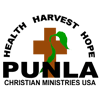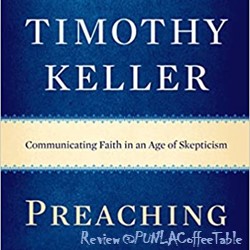Unlocking the Scriptures (Book Review)
23V21 – Unlocking the Scriptures (Book Review)
(written by Dr. Kip Wehrman 07/18/2023)
Hello my friends. Thanks for joining me today for an @ the PUNLA coffee table. I would like to share with you a book I read by Cyril Barber titled “Unlocking the Scriptures : The Key to Inductive Bible Study.” I to share this with you as a potential resource that at least some of you might be interested in.
Let’s Pray
Unlocking the Scriptures : The Key to Inductive Bible Study by Cyril Barber begins with a story from National Geographic detailing the search for Atocha. Atocha was a treasure ship that sunk in the 1600’s. Barber parallel’s the study of the Bible with the quest for the Atocha. Barber continues his analogy using the underwater search for the Atocha. To study the Word of God successfully we must read like it’s the first time with excitement. Barber shifts to other literary examples like Durrell’s Prospero’s Cell and Homer’s Odyssey. Just like these great books, when we read the Bible we should imagine the events unfolding before our eyes. This requires context. The where, when, what, why and how of the Bible story. Barber also stresses the importance of becoming “sensitive” to the text.
In Chapter 2 : The Importance of Accuracy Barber discusses the question, “How can you know your interpretation is right? Sound principles of interpretation should follow a three-fold approach, literal, cultural, and grammatical. Barber calls sound interpretation the margin of profit. OU interpretation is grounded in objective, verifiable data with adequate control over our method which is a historical proven practice. Barber urges us to progress beyond familiarity with a few select verses to an understanding the full context of full Scripture passages.
Chapter 3 : Feast of Joy begins with the “how-to of application.” Barber encourages us to use our minds to place ourselves in the scenes of the Bible. Careful observation and interpretation can pave the way for application of the Word of God. A turning point in our study comes when we ask, “what does this mean to me?” However, any Bible application must be consistent with Biblical precedents. There is a delicate balance required and we must learn the art of applying Biblical truth to our life without taking Scripture out of context.
Chapter 4 : On the Right Track addresses two methods, synoptic and analytical. The synoptic method of Bible study is like a road map. It enables us to look ahead just like we do when we chart our path on a map. There are dos and don’ts. Keep it simple and clear. Focus on one book or person in the story or time period in history. Take into account specific words and phrases. Note the beginning and end of the book with special care of what happened in between. The analytical method of Bible study is the extra details which require analysis of the text.
Chapter 5 : Love Letters discusses the Geographic method. Barber uses a quote from existential philosopher, Soren Kierkegaard to describe how our study of the Bible should be like reading a love letter. Barber then modifies this analogy to a loving Father to child whom He loves. Barber then uses the Genesis story of Abraham to demonstrate this technique.
Chapter 6 : Window On the World discusses the Historical method. The historical method of Bible study can be applied to a book, a person or an incident in the Bible. The historical method requires us to take a careful look at the setting to find out as much as possible about the people in the story. When applied to an entire book of the Bible the historic method seeks to answer questions. When was it written? Why was it written? By whom was it written and for whom was it written? Also, the where and how and what. Barber continues using the Genesis story of Abraham to demonstrate this method.
Chapter 7 : Spanning the Centuries discusses the Cultural method. Barber begins this chapter with a quote from Charles Ryrie, “The Bible is the greatest of all books; to study it is the noblest of all pursuits; to understand it, the highest of all goals.” The Bible is part of our Christian heritage. The Bible documents our changing roles as Christians. The Bible is our source of our rule of law politically, religiously, and sociologically. The Bible shows us the importance of covenants and promises. And especially, how God honors His promises.
Chapter 8 : At the Center discusses the Doctrinal method. Doctrine is essential the study of theology. However, theology has been contaminated by philosophy resulting in a battlefield of “thinkers.” So, how then may we attain a knowledge of truth? Ezra in the Bible demonstrated how this should be done. He “set his heart to study the law of the Lord, and to practice it, and to teach His statutes and ordinances in Israel (Ezra 7:10).” Our goal should be to study God’s Word and put it into practice, then teach others. Of course, the challenge is what technique to use in our investigation of doctrine. First method should be to use the Bible itself with its main divisions. A second method is to gather as much information about our focused writing, then progress from Genesis onward. A third method is to orient ourselves toward subjects.
Chapter 9 : Roots, Relationships and Responsibility discusses the Sociological method. This method primarily focuses on the family unit, and how the story affects the family unit as part of the greater society. Barber again uses the Genesis story of Abraham to demonstrate this method. The first approach is to focus on timely topics in the text. The second approach is to focus on historical highlights in the text. A third approach is to focus on a top priority for instance child-rearing.
Chapter 10 : Learning About People, Part 1 discusses the Biographical method. “God is interested in people. Proof of this may be seen in the large portions of the Bible that are devoted to stories about people.” The powerful stories in the Bible stress not only the good qualities of person but also the weaknesses and failures. This begins by collecting information about the person including interpreting facts and comparing facts from different sources or stories. After which we can study the character including their traits and their activities.
Chapter 11 : Learning About People, Part 2 expands more on the Biographical method. Part of our study of individual characters includes lessons not learned and fragile emotions of the characters. This can include the manifestations of fear and other emotions. It can include negative emotions like anxiety, anger, or guilt, or positive emotions like love.
Chapter 12 : The Connection Between Being and Doing discusses the Ethical method. Beyond the obvious disagreements on how to define ethics or moral principles. Changing attitudes have blurred the lines but the foundation of our ethics should be the fear of the Lord. We have to remove our social masks and recognize the difference between liberty versus legalism and license.
Chapter 13 : The Goal of Life discusses the Devotional method. Barber says, “The goal of every Christian should be the conformity to the image of Christ.” Part of this must be becoming grounded and rooted in the Word of God. Barber again uses the study of the Genesis story of Abraham to demonstrate examples of how devotional studies of this story can address situations in our lives. These can result in prompting for obedience, interventions, etc. We should expect times of testing, urges for obedience, and lessons in patience.
Chapter 14 : Reaping the Rewards discusses the Topical method. Barber begins by stating that, “ you are about to enter one of the most fruitful and rewarding areas of Bible study. It is also one of the most challenging.” Barber again uses the Genesis story of Abraham to demonstrate this method. Barber notes that the topical method of Bible study is like the doctrinal method of Bible study. It will provide definite benefits for the one who perseveres with it. One of these benefits is this type of investigation of Scripture is very practical. A second benefit of this kind of study is that it provides us with confidence- confidence that comes from knowing what God has revealed.
Chapter 15 : The Finale begins with a recap of sorts using Ray Bradbury’s Fahrenheit 451 as an analogy. In our study of God’s Word, we have considered the techniques associated with observation, interpretation, application, and correlation. Barber has done this by demonstrating several Bible study methods. He is stressing what we gain by seeing a new perspective on Scripture. Barber ends with a couple practical questions. Have I missed the central purpose of the text and is my focus too narrow?
Let’s Pray.
I personally really like this book. If you are looking for a book that gives to answers for how a cult is twisting the scripture, then this is the book for you.
Thank you for joining me @ the PUNLA Coffee Table today, I hope you’ll join us again. If you liked the message, please share the link with a friend. Send me comments, my email should be on the screen. Until next time @ the PUNLA Coffee Table. God Bless.


